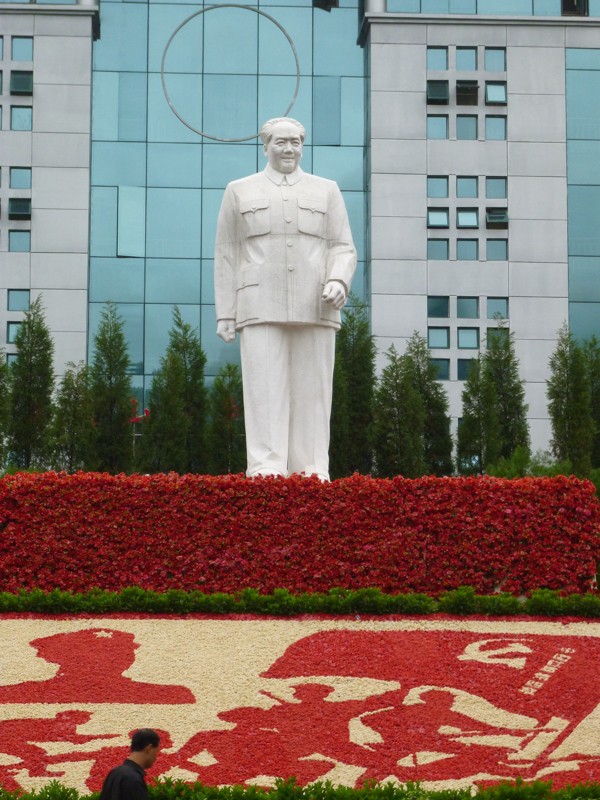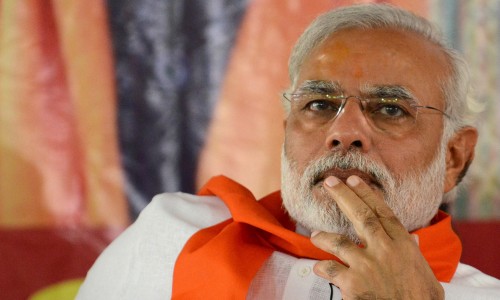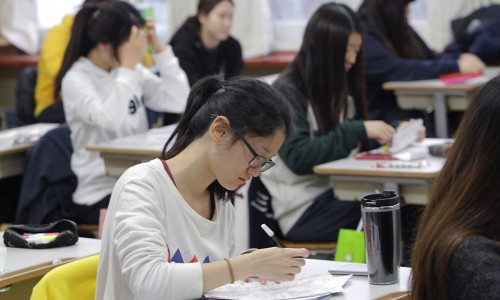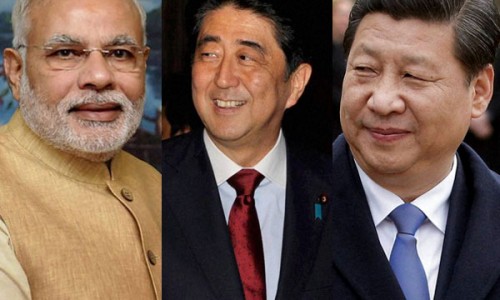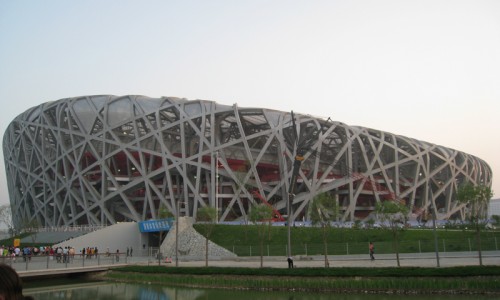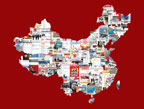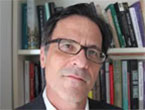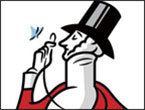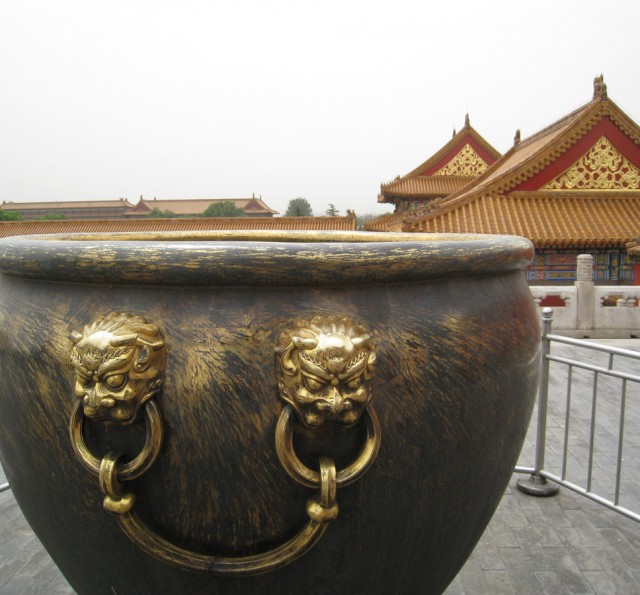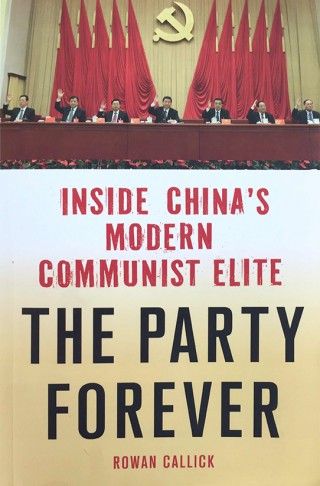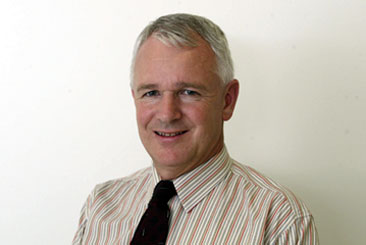Published on Brisbane, November 20 2008
Virtually every Chinese garden features the clever design device called zhang jing – blocked view, or screened scenery – through which, even in a comparatively confined space, the stroller keeps encountering fresh, formerly hidden, vistas.
So it goes with China’s big landscape, its national story (and it’s even arguable, of course, whether China can be described as merely a “nation” in the sense understood in European languages).
You catch a glimpse – perhaps beguiling, perhaps rocky and to the Western eye alienating – of where China seems to be heading, and then the outlook swiftly changes, you lose focus, a fresh view emerges.
A rather over-neat but fun new encapsulation puts it like this: 1949: only socialism could save China. 1979 (following the cultural revolution): only capitalism could save China. 1989 (after the Soviet demise): only China could save socialism. 2009: only China could save capitalism.
Or as one of our leading sinologists, Geremie Barmé of the ANU, puts it, the classic Maoist anthem The East is Red sounds today more like The East is Rich. China intrigued the world as it hosted the great five ringed circus, the Olympic Games, in August, by somehow contriving – certainly striving – to be both.
Today it’s not as clear as it once seemed, where China has actually come from, let alone where it is and where it’s going. It is possible, though, to make some reasonably confident predictions, about the next dozen years or so at least, and they are mostly continuities: the ruling communist party, the world’s most powerful institution, – yes even more so than the Vatican – will remain in firm control without significantly devolving power; the commanding heights of the economy will remain in state hands, although this no longer means the Marx definition, ownership of the means of production, but instead, ownership of the logistics of control in the broadest sense, from airlines to telecommunications to banks; China will continue to champion globalisation; it will maintain close relations with the USA – of which it holds $US 600 billion Treasury bills – while also emerging as the leading influence in the strengthening big power group within Asia; China will become an ever more attractive model for developing country leaders, while its own international model will remain Singapore; its economy will evolve up the value scale; demographic convulsion (a one-child policy following populate-or-perish) will boost educational skills while causing grave economic challenges, requiring higher productivity and greater returns on capital at home and abroad; and Confucius’ come-back, signalled by party slogans using phrases such as “harmonious society” and dramatised in the Olympic Games’ opening ceremony, will provide some moral and philosophical content lacking since Maoism, though not Mao, were discarded. In general, not just the survival but the reinforcement, of what American sinologist Andrew Nathan calls “resilient authoritarianism”; if you’re running the show and you’re receiving applause from all over the world, especially from the international business community, why change the system?
The standard story of China’s recent history, widely accepted in the West as well as there, is that foreign insurgency and greed combined with feudal arrogance and incompetence to lay the country low in the second half of the 19thcentury. In the imperial days, commoners were forbidden on pain of death even to look on the emperor, and court intrigues and secrecy seemed to form the very fabric of public life. Then “warlords” stepped in to the vacuum that followed the demise of the Qing dynasty in 1911 and the failure of Sun Yat-sen’s irresolute republican endeavour. Chiang-kai Shek’s Nationalists colluded with the Japanese invaders. Everything disintegrated. And Mao Zedong’s communist party saved the day.
But a growing body of research – including a tantalisingly brief but telling new book, The Age of Openness, by Frank Dikotter, is revisiting the rapid modernising and opening and decentralisation that took place in China in the first half of the 20thcentury. The history of that period has inevitably been written with the pen of the victor, the centralising party led by Mao. Curiously, even Westerners have until recently tended to view China through these same lenses: Mao rescuing a hopelessly corrupt, sick, starving country from disaster. A case can instead actually be made that this last chapter was quite different, that Mao instead set China’s modernisation and opening back, and that the rapid economic growth of the past decade amounts to a long overdue catch-up – with China still well behind Hong Kong and Taiwan, let alone neighbours Japan and South Korea.
Another surprising twist to the China story is that the present communist dynasty retains remarkable continuity with imperial rule, including its secrecy, and the utter separation of its leaders from ordinary life. Once elevated to the Politburo, you and your spouse will probably never again eat in a restaurant, stay in a hotel, fly in a plane or even drive on a road at the same time as any member of the public.
The party itself operates in an extraordinarily confidential manner. Its funding is secret. It does not release a budget or a balance sheet. It appears to own some massive assets, but no outsider – or ordinary party member – knows for sure. The manner in which its leaders emerge, is also secret – although the phrase “intra party democracy” has become a common mantra, and party members in some areas are starting to choose between some candidates for office.
Today’s communist party general secretary, Hu Jintao, is perhaps the least known top leader since back into earlier Qing days. Journalists, domestic and foreign, have unearthed remarkably little about him or his family, given that he is running the world’s most populous country for ten years, through to 2012. He and his peers work and, it seems – we really don’t know for sure – live most of the time in the Zhongnanhai compound just to the west of the Forbidden City.
When he was invited to an informal dinner with half a dozen people, including the economist Nick Lardy, at Bill Gates’ little pad in Seattle, he delivered a lengthy written speech to the dinner party as the soup grew cold.
There is virtually no proven anecdote about his life, which has been lived within the party’s capacious embrace, rather than in government roles. His only recorded joke came when he was visiting the US half a dozen years ago, just before he became general secretary. When the then governor of New Jersey James McGreevey told Hu – whose hair is jet black – that he did not look his then 59 years, Hu replied: “China would be happy to share its technology in this area.”
One thing is for sure: he is not a Mikhail Gorbachev.
Two years ago, all 74 million members of the party were required to watch a series of eight DVDs on the downfall of the Soviet communist party, and of course the lessons for their own survival.
The programs placed most of the blame on Mikhail Gorbachev for what the commentary called “the extinction of the party, which must mean the extinction of the country” after 74 years in power. By extension, the same equation may thus be applied to China: the end of the party’s rule – 59 years so far – will mean the fragmentation and collapse of the country. The party’s DVD presentation said about what happened in Russia: “Collaborating with nationalists, the so-called democrats within the party sped its split and that of the Soviet Union encouraged by concepts advocated by Gorbachev, including democratisation, openness and diversity of public opinion.” On Christmas Day 1991, it said, “the flag with the hammer and sickle, deeply loved by generations of people in the Soviet Union and around the world, sunk in the cold winter wind.” The DVDs concluded with the rhetorical question: “When strong ideology that unites the hearts of the people and party members is thrown away, can that party survive?”
In China, the chucking out has only gone so far. The party has drawn a line, and policed it.
Mao’s rhetoric has largely vanished. The word he inherited from the founder of modern China, Sun Yat-sen, to provide a Chinese equivalent for the Soviet tovarich or “comrade” – tongzhi, meaning the same intent – has become appropriated by China’s gay community.
But Mao himself remains on view, much of the year, in his ugly Soviet maosoleum that destroyed the harmony, the feng shui, of Tiananmen Square, under the gaze of his giant portrait on the Tiananmen Gate. The picture was defaced a few months back by paint thrown by an angry farmer whose land had been stolen by local officials. A replica was back on the gate within hours. An informal formula was devised by Deng, defining Mao as 70 per cent good, 30 per cent bad. Historian Xia Chun-tau, the 43 year old vice director of the Deng Xiaoping Thought Research Centre, one of China’s core ideological think-tanks, at the Chinese Academy of Social Sciences, stressed that “there is only one correct and accurate interpretation of history, and only one explanation that is closest to the truth. There is a pool of clear water, and there’s no need to stir up this water. Doing so can only cause disturbance in people’s minds.” This requires avoiding discussing in the media, much of modern Chinese history – such as the Cultural Revolution, or what is known as the Tiananmen massacre.
And in her new book Marketing Dictatorship, Anne-Marie Brady, of New Zealand’s Canterbury University, says: “China’s economic reforms in the propaganda sphere, especially since the 1990s, have been geared towards privileging partyinterests” and have managed to strengthen that apparatus. The party, she says, has re-emerged since 1989 and succeeding crises “re-strengthened and as dominant in Chinese society as ever.” This process has been reinforced by the state control of the airwaves and the net. The party has found ways to transform the new instruments of liberation, as they were originally conceived – the mobile phone and computer access to the internet- into instruments of control. Thanks to innovative and expensive surveillance technology – where China’s research leads the world – the government can reach into almost every Chinese home by keeping tabs on the family’s electronic devices. There are about 230 million regular net users in China. But each internet service provider must obtain the true identity card details of every person posting opinions online – on threat of losing their licence.
So, Hu may be little known but he is certainly no Gorbachev. Perestroika – restructuring – and glasnost – opening – that formed the kernel of Gorbachev’s Russian revolution evoke Deng’s “kai fang,” the opening-the-door strategy that Deng launched at a party central committee plenum 30 years ago next month. But under Deng the opening meant some price signals, foreign investment that brought with it new technology and new management skills, and most importantly for its early success, liberating farmers from their enforced communes to return to family-focused plots. Not any meaningful political role for the masses. Power still comes from the top down, while revenues are expected to come from the bottom up. When I talked with a Chinese friend about how I had made contact with the taxation office and negotiated a monthly sum, he said I must be mad. No one he knows pays tax, he said – and anyway, it’s immoral; why give money to people when you have no say in how it’s spent?
Beyond such quibbling, however, the underlying, unspoken contract that Deng agreed with the Chinese people still stands. After the Cultural Revolution, and again in an accelerated manner after the Tiananmen massacre of 1989, Deng knew that any residual ideological attraction had perished, that the party must seek a new source of legitimacy. Thus the party was to guarantee constantly improving living standards, while in return the people would allow it to continue to rule without impediment.
Since then, first Jiang Zemin and then Hu Jintao have played their parts in ensuring that even as areas of the economy are slowly liberalised, China’s polity stays essentially the same.
Hu’s nominated successor, Xi Jinping, is a “princeling” with a bit more of a story because of his background of a family in public life. But he is still scarcely a household name in China. A year ago he was selected, at the closing of the party’s five-yearly congress, to join the Politburo standing committee. It was a telling scene. We in the media were assembled in the West Hall of the Great Hall of the People. After a long wait, Hu led out the other eight members of the new standing committee, in order of precedence, all wearing dark blue suits with red ties. It was only then that the world learned that Xi had been chosen over Li Keqiang, and that Li would become instead the heir-apparent to Premier Wen Jiabao. Both emerged, as Chinese leaders now usually do, from senior party positions in the provinces, not from within the central government structure that implements policy shaped by the party.
Immediately after that announcement in the Great Hall, I asked people in a bus queue round the corner, what they knew of the heir apparent Xi Jinping. None had ever heard of him, but all knew and liked his wife Peng Liyuan, a famous singer of patriotic anthems who for years scored the top slot, approaching midnight, at the most viewed regular TV show of the year, anywhere in the world: the variety program on CCTV on Chinese New Year’s Eve. “Oh is THAT her husband?” they asked. Now the cover is being drawn over the song-bird as Xi’s public persona is promoted.
Since Deng Xiaoping went to Mao – or perhaps to somewhere else, maybe to Adam Smith or Lord John Maynard Keynes – the party leadership has evolved from a charismatic figure to a collegiate group in which no single person tends to dictate policy. It appears that all significant party factions are consulted until a consensus eventually emerges. A strong voice, in this scenario, can veto or delay reform for years. The upside, for the leadership, is the smoothest transition process in Chinese history. We can now know, for instance, that barring a shocking turn of events, Xi Jinping will take the top job from 2012 until 2022, during which Li Keqiang will be Premier.
The party is thus the great constant in the China story today. Whichever turn you take in the Chinese garden, wherever you look, the party is there. For instance, the People’s Liberation Army, Hu reminded everyone on its 80thbirthday last year, is “an army led by the party.” It is not the party of the government, or of China more generally. The party is extending its influence in the private sector, with branches being widely established in corporations, and entrepreneurs becoming party members. If you are invited to a banquet by potential business partners in China, pay special attention to the person who claims to have misled his or her name card. They haven’t, of course; no one forgets name cards in Asia. They are almost certainly the party rep, the person whose view counts for most. But because they don’t have a corporate title, may be dangerously neglected.
This provides a good example of how China’s story can confound viewers who believe they have seen one thing, but were in fact watching something quite different unfold. Earlier, in this way, the world widely believed that when Mao Zedong appeared on the Tiananmen Gate on October 1 1949 and inaugurated the People’s Republic, saying “China has stood up,” we were seeing a commoner stand at last in the place where only emperors had once stood. Of course, in hindsight it is now clear we were actually seeing the new emperor declare himself.
The same misperception occurred when Jiang Zemin, Hu’s predecessor as general secretary, led the redrafting of the party’s constitution six years ago to permit capitalists to join. Many Westerners interpreted this as a sign that businesspeople were eventually going to take over the party, as part of the apparently inexorable shift of a modernising China towards liberal democracy. But no. China is not taking any steps towards becoming a liberal democracy that might be recognisable in the West. And the party’s opening up actually served a different goal entirely: bringing the business sector more palpably within the party’s influence, with business leaders and employees becoming absorbed within party structures. I recently visited the extraordinarily opulent, park-like headquarters in Shenzhen of Huawei, now one of the world’s top four telecommunication equipment designers and providers, with the likes of Ericsson, Cisco and Siemens. It was founded by a former People’s Liberation Army officer who still runs what is often held out as China’s model new private corporation. Its shareholding is a little mysterious, but generally 80 per cent is said to be held by employees. How is the board appointed, and to whom is it answerable? Employee shareholders play a role, I was told by a suave public affairs manager. But who has the final say? Well, the manager said, the board also of course answers to the party committee – whose very existence does not appear in any of the company’s glossy, multilingual brochures.
Similarly, increased access to markets, at home and abroad, has not led to much greater sense of accountability, or significantly better governance. The sale of shares in state owned companies – including to foreign partners – has provided them with the capital to extend their domestic market share and global reach, without relinquishing control. I recall three years ago when the Royal Bank of Scotland, that’s recently needed a big bail-out from Gordon Brown, paid $US 1.6 billion for a 5 per cent stake in the Bank of China, the Britons were full of praise for the Chinese bank’s executive chairman, with whom they had negotiated and in whom they expressed full confidence. Within months, he had moved on, as a party politician, to a senior position in a province, maybe even party secretary. Promotion for him, puzzlement for the Scots rep on the Bank of China board, who had no idea what was going on until the announcement.
While the Shanghai, Shenzhen and especially the Hong Kong share markets were still running hot, last year and in the later months of 2006, the flotation of minor stakes in state owned enterprises became a fabulous and familiar route through which the party elite and their families were rewarded for their loyalty. In almost every case, the floats were hugely oversubscribed – chiefly because the stakes were limited in size – and of course the elite received special access to the shares, which for 18 months soared amazingly on their first day’s trading. Dynastic fortunes were made overnight. And of course further opportunities for the same, were presented by incessant, virtually unregulated insider trading.
Thus have state assets and wealth shifted into the hands of China’s elite – with a result that the wealth gap has widened rapidly. The 600 million urban Chinese earn on average 3.3 times the income of the 700 million rural Chinese, who in 2007 each earned $A 625. In the last decade urban incomes have increased 150 per cent, rural incomes 91 per cent. The Asian Development Bank said earlier this year that China’s gini coefficient – the degree of inequality in the distribution of income – is now 47, about the same as Nepal. India’s is 36, although the people in the bottom 20 per cent are better off in China than in India. In comparison, Australia’s Gini coefficient is just over 30, which would place it at the bottom of the 22 Asian countries surveyed.
The children of China’s leadership are helping construct dynastic stakes in strategic industries. Jiang Zemin’s son, telecommunications; Li Peng’s family, power; Zhu Rongji’s son, banking; Hu Jintao’s son sold to Beijing city government the new automated ticket machines it recently introduced for its rapidly expanding subway network.
Some Western visitors to China remark that the modernity and apparent affluence to be observed in major cities appear to lead China inexorably in familiar directions, presuming that an emerging middle class – or at least, their student children – will sooner or later be demanding political reform – maybe even back in Tiananmen Square as in 1989, defending the goddess of democracy.
One of Australia’s leading sinologists, David Goodman of UTS, where he is now deputy vice chancellor, says in his recently published book “The New Rich in China” that China’s transformation “is seen as hopeful by those who see an equation between industrialisation and economic development on the one hand and the emergence of a peace-ensuring liberal democracy on the other. The argument that these people are ‘just like us’ is very seductive, especially if it is delivered without any hint of irony.” Goodman is one of the top echelon of Australian sinologists – several are in this room – who have generally contrived to free themselves of the burden commonly placed on academics in other Western countries, of aligning themselves “for” or “against” the ruling party, or even for or against “China.”
He says that a parallel is often drawn between China’s development since its reform era began 30 years ago, and the period of industrialization in Europe and the USA. At first, he says, the bourgeoisie in the West were a new middle class created by the process of industrialization. As this process deepened, the modern state became more complex, producing managerial and professional classes who neither owned capital nor controlled the state, but derived income and status from service and management.
The demand for a widening of the franchise and the emergence of liberal democracy during the first half of the 19thcentury in northern Europe are often seen as necessary results of the emergence of the bourgeoisie, says Goodman. And the ensuing managerial revolution in the first half of the 20thcentury is “part and parcel of the development of mass society, mass politics and the welfare state.” The assumption of middle class behaviour, especially in patterns of consumption, “is to be expected as a function of globalised commercialism,” with Gucci, Loewe and Louis Vuitton brands targeted at the wealthy consumer in Shanghai and Beijing as well as in Milan and New York.
But Goodman insists that China’s “new rich categories of entrepreneurs… are less the new middle class than a future central part of the ruling class.” They are quite unlike the 19 th century European bourgeoisie in the extent to which they have emerged from and retain close relationships with the established political system. For this is not China’s first wave of modernization, by which some believe Deng Xiaoping conjured the country’s remarkable industrial machine from an imploded peasant nation.
The Republican era (after 1912) saw sustained attempts at modernization, Goodman points out, in various parts of China under both warlord rule and colonial influence. Much of this economic activity was externally owned or sourced, so that parts of the economy were considerably better integrated into the world economy by the early 1920s than they would again be until the 1980s.
The establishment of the People’s Republic then saw renewed and sustained modernization and industrialization. Managerial and professional jobs multiplied, so that during the 1950s the people who filled them became “the backbone middle classes” of the new party-state in China. Many were purged during the Cultural Revolution of 1966-76, but as they and their families were then restored, “so too middle class reputations rose again.”
And what of the entrepreneurs who have emerged more recently? Goodman highlights “the close associational links between the new entrepreneurs and the party-state, which seeks actively to incorporate them” through “family networks of influence.” Goodman says that the reallocation of state assets over the last couple of decades “sometimes left less than clear distinctions between ownership and management.”
In Hangzhou, he relates, an entrepreneur was asked if the state assets he now controlled, had been paid for. The response was clear: “There’s no need. These were previously the assets of all the people, and we are the people.” Goodman points out that business people in China, who tend to be incorporated in the party-state apparatus, enjoy “cost-less (to them personally) access to resources and effectively subsidized income not available to others.”
The pattern of economic development in the People’s Republic fits more closely that of Germany, Japan and Russia during the late 19th century than that of Britain or the US, he says. “In those countries, the state played a central role in industrialization, as opposed to the laissez-faire capitalism of the earlier European experience based on the protection of the individual outside the state.”
A common generational pattern, he says, is that leading cadres are recruited on intellectual merit from the peasantry, then as they retire their children become business people, just as we have seen with leading party families – “building,” says Goodman, “on the local relationships and networks of influence that their parents have developed.” Thus in China, “ownership, management and control are intertwined in ways that cut across previous analyses of middle (or indeed any other) class behaviour.” All China’s classes are increasingly portrayed as middle, for harmony’s sake. The rhetoric of class war has vanished. It’s just that some people are decidedly more middle than others.
Since 1989, then, the party has moved with purpose to co-opt the intellectual and business elites, making full use of the immense resources now at its disposal. The party schools in every province and major city – in effect, administrative finishing schools – are sumptuously appointed. Upwardly mobile young corporate managers are strongly advised, for instance, to invite their former professors to give lectures to their state enterprise or private company colleagues, for which the corporations are expected to pay the professors handsomely. A Hong Kong politics professor friend told me that his colleagues in mainland China now complain they can’t find any spaces left on campus to park their cars. Young educated Chinese are increasingly seeking jobs not so much with multinational corporations as with government agencies, because while the pay remains poor, the other perks – including the access to assets – can be immensely rewarding.
These young people – quite well educated, sometimes overseas in Western countries, maybe from privileged, party-loyal families – form the core of the “new Nationalists” whom the world saw surge forward to demonstrate against Westerners’ own protests over China’s governance of Tibet during the international pre-Olympic Games torch relay. We are likely to see more of this in China’s next chapter.
Wang Xiaodong, an intense leader of the China Youth and Juvenile Research Centre affiliated with the Youth League – the core power base of Hu Jintao –has become a widely published cheer-leader for this new nationalism. The younger generation, he told me, “has more contact with the West, they understand it better. They speak more fluent English. They know Westerners are not really angels, they realize that they are different from us not only in ideology but in national interests. The younger Chinese have learned a stronger sense of individual rights from Westerners.”
He said that the central event in Tibet in April was “the attack by Tibetan monks against Han and Muslim people.” Distorting this into the suppression of freedom loving Tibetans is “as if China praised the terrorists who drove the airplanes into the twin towers – it’s obviously unacceptable to us.” Wang believes this period of resurgent Chinese nationalism will have “a profound and long lasting significance, like the May 4 movement in 1919″ when students gathered at Beijing University to draft a manifesto against foreign incursions. He said: “Some Westerners are saying that Chinese must make an effort to make themselves accepted by the West, That is an out-dated opinion. The West must learn how to make itself accepted by the Chinese.” The new generation, he says, rejects Mao Zedong’s socialism but embraces his nationalism, while also tentatively re-adopting some traditional Chinese values. China’s current leaders are essentially administrators, he says – but when today’s students succeed them, “China will globalize its national interests, and this will affect not just our close neighbours but the whole world. It must gain the capacity to protect those interests.”
Wang’s views may seem extreme, but they are sufficiently mainstream in China for him to be granted widespread access to the mass media, especially frequently in Global Times, a more popular and raucous offshoot of People’s Daily. His version of nationalism, and that most commonly expressed in the broader Chinese blogosphere, is emphatic about the “sacred” nature of China’s borders, although of course these have shifted immensely over the last few centuries. That they contain Tibet and the Xinjiang of the Turkic Uighurs is non-negotiable. Yet at the same time, the “sympathetic community” that has emerged this year in China out of the aggressive nationalist demonstrations over Tibet, and their altruistic flipside, the outpouring of sympathy over the Sichuan earthquake in May, is palpably a Han Chinese community. Retaining all 55 “ethnic minorities” within the great wall is a given. Yet during China’s next chapter it is inconceivable that a national leader can emerge from these minorities, in the manner that Barack Obama, say, has done in the US.
It would be wrong to portray China’s emerging generation as entirely uncritical of the party-state though. Their views range over the spectrum.
One place to check on just what’s going through some of China’s younger minds is at Dashanzi, the giant, buzzing modern art gallery precinct carved out from Bauhaus style munitions factories in north-east Beijing, a popular hang-out for the city’s large clan of bohemians. There, the new theme attracting the biggest crowds this year on the eve of the Olympics was that of loss and destruction – typified by the razing of the entire “conservation area” that was Qianmen, the heart of old Beijing, and its replacement by a kitsch retail and restaurant zone “recreating” a version of Ye Olde Beijing.
A particularly crowded gallery at Dashanzi when I last visited, four months ago, was split by a crumbling brick wall surrounded by the poignant detritus of an abandoned home – broken toys, old family photos – with massive pictures of half-demolished hutong homes around the walls. Another venue featured Jiang Pengyi’s brilliantly worked photos of skyscrapers and other contemporary “signature” buildings – even including a famous statue, from Beijing University, of Mao Zedong – abandoned in heaps as landfill. The exhibition’s title: “All back to dust.” Thirty year old Jiang wrote that once he had reduced the grandiose new buildings to a tiny scale, “they are paid much less attention. It is a lot more enjoyable to look at them like this… As sacred Buddhist texts say, these grand objects… in fact are all just piles of dust.”
These were challenging images, and this was challenging talk. For the giant new edifices of Beijing, like the billion dollar China Central TV tower designed by Rem Koolhaas that strides like trousers, people say, across the Chaoyang business district, and the Olympic Bird’s Nest and Water Cube, were transformed into mystic temples dedicated to the New China – as was the Olympic torch, into “the sacred flame” as they called it of Chinese patriotism.
As a new generation of urban middle class emerges, it is inevitable that they will feel less grateful for their comparative material comfort, that they will start to take this for granted, and that their concerns will move on. The environment is already a core concern among young urban Chinese, and it is likely to prove difficult for the party to keep their interests corralled safely within the nationalist compound. Younger Chinese friends were largely disappointed with the opening ceremony of the Olympics, saying that it represented the way the party views China – or would like it to be viewed – with thousands of young soldiers beating drums in absolute precision, but that it failed to seize the opportunity of presenting the human face, what they see as the true face of China to the world – the unkempt, ironic, chaotic China that has been mostly confined over the last few decades to private spaces.
One of the best economic analysts of China, Arthur Kroeber, the Beijing-based director of economic research firm Dragonomics, has warned how attempts – even those of its own government – to define China typically founder on the reefs of the country’s size and its rate of change.
Thus, he says, “it is always possible to find some evidence in support of any generalization, no matter how outlandish.”
He says that all of the following common contemporary definitions, describe part of the truth, underlining the zhang jing experience, the blocked scenery effect that leads people to believe they are seeing the true China but then turn the corner and find a different truth. China, he says, is at the same time:
An emerging global economic and political power, like the USA and Germany in the late 19th century.
And a hub of the Asian regional economy, heavily dependent on foreign investment, technology and markets.
A communist despotism run by a disciplined technocratic elite.
And a communist despotism run by a hopelessly corrupt elite increasingly unable to manage the social tensions created by economic growth.
A post-communist state where the government has signed on to the most ruthless version of mid 19th century capitalism.
And a post-communist state whose government has pursued sensible, pragmatic policies that have raised millions out of poverty.
A highly centralized state where the national government ultimately controls almost everything.
And a highly decentralised state in which the central government is unable to enforce its writ on almost anything.
A civilization with a long history in which traditional Confucian values are gradually re-asserting themselves.
And a society unmoored from traditional values and unwilling to import Western values, so its material success is complemented by a spiritual vacuum.
Kroeber says that “Western critics tend to assume that political legitimacy can only be conferred by elections.” But in China, a regime’s legitimacy comes substantially from its ability to mobilize the country’s bureaucratic tradition. “The system’s ability to respond to a wide range of problems, to maintain social order, to provide a steadily increasing level of public services, and to increase China’s standing in the world, are all important contributors to legitimacy.”
Over the next few weeks in China, and into 2009, the feisty personality and the thoughts of Deng Xiaoping will also be promoted as important contributors to the system’s legitimacy – especially as the country faces economic challenges triggered by the global downturn but also deriving from unique local circumstances.
These include establishing a sufficiently dependable and nationally portable health and welfare system that counters the old houkou structure of local registration whereby migrant workers have been ineligible for government services, freeing up the financial system to give people a broader range of savings opportunities, and giving small and medium businesses the chance to borrow from legal financial institutions. And underlying everything else, is the big question of whether the party is able and willing to embark on the course Deng himself contemplated – and which party chief Zhao Ziyang began to implement before his meeting with students in Tiananmen Square triggered his downfall and house arrest until he died 16 years later: the start of the separation of the party from its direct control and management of the institutions and processes of government, including the courts.
At the heart of Tiananmen Square during the Olympics, a vast slogan celebrating the Games was matched by another of equal size anticipating the 30th anniversary in December – “a harmonious chapter,” it said, using Hu Jintao’s ubiquitous keyword – of Deng’s launch of his bold economic opening of China.
This anniversary – to be marked by conferences and research papers, and doubtless, special TV tributes – will also highlight the recent move by the leadership to free China’s farmers to lease out their land or use it as collateral.
It was from the countryside that the Chinese revolution came, not from the urban proletariat as in Russia. It is in the countryside that tens of thousands of “mass incidents” have been reported annually, threatening destabilisation to a party whose top three priorities are control, control, control.
Hu Xingdou, an economics professor at the Beijing Institute of Technology, says: “The local government has become the front line of conflict. But there is no channel to allow people to express their will. They lack the right to speak, the right to organize and unionize to represent their interests, therefore they can only use an irrational way by demonstrating or rioting to solve problems.” But there are signs that local officials are starting to look to mediation of grievances rather than automatically sending in the wujing, the People’s Armed Police. Local government in China have been handed heavy burdens during this reform period.
Torrents of edicts have been issued from Beijing to local governments all over the nation of 1.3 billion: maintain rapid growth, attract new industry, boost the service sector, cut pollution and energy use, close old state-owned loss-making factories, reduce the demonstrations and protests by laid-off workers and by farmers who have lost land to industry.
In short, somehow create a Confucian “harmonious society” from a host of apparently contradictory priorities. And fund it all yourselves. No wonder local officials are being blamed by the many millions still gazing empty-pocketed at the shop windows displaying the opulent goods the nation is producing for foreigners, and for its own nouveaux riches. They are having to create mini welfare states overnight, with scant taxing powers. And in Dalian, a coastal city I visited earlier this year in the north-east, they are doing so for a population similar to that of NSW.
The first 25 years of China’s kai fang or opening up were fuelled by Deng Xiaoping’s “to get rich is glorious” dictum. But today’s leaders, Hu Jintao and Premier Wen Jiabao, are placing a fresh emphasis on the quality of growth – on reducing the widening wealth gap and the worsening pollution. Failure in this next core communist party campaign would lead to eroding popular support and eventually, potentially, rumblings of a new revolution.
Dalian’s mayor, 50 year old former finance professor Xia Deren, told me: “Up to a dozen years ago, most people in Dalian were working in traditional industries – such as chemicals and ship building. At that time, the workers had hoped their employer would take care of them for life.” Suddenly, that burden was shifted to the city government, as it was throughout China. Local officials had overnight to find ways to provide the medical, educational, housing, pension and other needs formerly met by the state firms, whose workers lived on site.
But the central government did little to provide the resources for them to do so. No wonder that fees, commissions and other charges proliferated, further alienating may of their own residents. There is a very long tradition in China of people blaming local officials for everything that goes wrong, and praising the people at the top, who live in a remote and apparently caring, blameless world. People used to say, “If only the emperor knew…” Now they say, “if only grandpa Wen knew…”
In Dalian, the government had to introduce special budgets as welfare, health and education costs spiraled. The mayor spends much of his time trying to attract new industries. The evening after I met him he was attending two business banquets. He said he copes by eating alternate dishes. These new industries, he says, are supposed to consume less energy and resources. The key answer is jobs, he says. Besides looking after the army of older workers now redundant, the city has to attract businesses to employ the 80,000 young people joining the workforce every year, 30,000 of them graduates. Ultimately, Xia said, it is only “through healthy economic development that the government can meet people’s expectations.”
He presented me a copy of “The World is Flat,” a best-seller by Tom Friedman, a prolific champion of globalization – which he and other city mayors around China, especially on the coast, are grasping eagerly as their best chance to bed down the transformation from rustbelts into boomtowns. But the race against poverty and destabilizing resentment remains a marathon, and Mayor Xia is well aware that “outsourcing central” is only a way-station, not an ultimate goal.
Thus also the $US 586 billion stimulus package that Beijing is injecting into the economy as the labour-intensive export sector, for long the driver of China’s growth together with investment, faces massive job losses. The government has wanted for years to shift from over-reliance on this sector. But Beijing was too slow to do so, confronted by many local challenges, so it’s now been caught in this trap. What if it can’t deliver on its core source of legitimacy, continued improvement in living standards through constant economic growth?
My final take on changing China emerged from covering the Sichuan earthquake.
This period of not only geological but also human convulsion, opened an intriguing window on what Chinese people want for their own lives, and in which direction they want their country to go. Foreign businesspeople have tended to praise China’s top leaders for the country’s modernization, and to applaud their apparent capacity to enforce change by diktat – sometimes, by implication, forlornly wishing that democratic societies could be directed with such decisiveness.
But much of China’s rapid change can be attributed to the determination of its “masses” to carve out better lives for themselves and their children come what may, with the party’s legitimacy relying on its capacity to shift its tactics, even its values, in response to demands from below.
The Tiananmen demonstrations of 20 years ago served as a wake-up call to the party. While with one hand it cracked down cruelly on the demonstrators themselves, with the other it responded by ceding more space in the economic realm. Progress has happened as a result of individuals seeking, finding and exercising steadily more space in which to move – in which to start, develop and expand a business.
Government has enough on its plate to meet the growing demands on its services as China transforms itself into a modern, chiefly urban culture, without fighting a rearguard action for every inch of its economic turf. And as it has conceded space for people to build businesses, this has become perceived not so much as a favour, an act of generosity on the part of a usually omnivorous authority, but more as a right.
This is new ground in China, whose communist dynasty constitution guarantees many rights, but has circumscribed them with so many administrative regulations and caveats that – especially since China still lacks independent courts – they have become like gifts handed down from on high, readily withdrawn again. In contrast, the space – the de facto right – obtained by its constant personal exercise by many millions of people, is all but impossible to withdraw. This is now inching forward, from the right to own private property, to the right to start a small business, to the right to personal expression – though still not, in this case, to disseminate that personal view widely.
And now, it seems likely after 100,000 volunteers poured in to Sichuan after the quake, we shall see more space open up as an appropriated right, for private charity and volunteering. This period of two nationalisms – one angry and anti-foreign, one positive and empathetic – is forming the rising generation’s version of a Tiananmen Square experience.
The setting appears benign, from the party’s perspective; it was praised for its quake response. But even without expressing any demands, the actions of the volunteers articulated them: we no longer view the party and the People’s Liberation Army as sufficient proxies for us, we want to be actors too, in helping the afflicted. So centimeter by centimeter, civic space is carved out, just as was space to do business. The question now, is when and how the party will find a way to regularize this inexorable trend.
Many observers are awed by the apparent pace of change in China. And for the laobaixing, the ordinary folk, life has perhaps never been better; but the same can be said for people around the world. Despite the physical modernization, the core institutions of state have changed little if at all in 60 years. Will China’s next chapter see such change? I wouldn’t bet on it. Just as I wouldn’t bet on Chinese failure or implosion; that has been a losing bet ever since the kai fang strategy began. Inertia is a more likely winner.
It was not a promising sign, that just about the only prominent figure who appeared to be missing from the rows of leaders at the Olympic opening ceremony was the premier who secured both the Games and China’s crucial accession to the World Trade Organisation – the single-minded Zhu Rongji. Such outspoken figures do not fit today’s template. Zhu grasped the nettle of state owned enterprise reform, as we have seen, laying off millions of workers in order to save the sector that is now helping power the whole economy, along with the mostly privately owned and foreign invested manufacturing sector, and is starting to provide the government with crucial revenues to help fund its overdue welfare provisions.
The present Hu Jintao-Wen Jiabao team have slowed the appreciation of the yuan to protect exporters, pushed state funds into the ailing share markets and addressed inflation through capping prices, including of energy. In political administration, it is also a case of one step forward, one step back. Following recent riots in Guizhou over the handling of a rape case, and following the revelations in Sichuan after the earthquake that thousands of children died needlessly in “tofu” buildings in their schools – firm outside but squidgy inside – the government issued an instruction that local officials must listen to people’s complaints, “upholding legal rights and promoting social harmony and stability” – while denying parents access to legal redress. The same is now applying to the families whose babies have died or become severely ill in the melamine milk scandal.
Harmony, a classically Confucian term, is the keyword of this government. But which Confucius is the party now promoting? The core concept of harmony, for instance, has been re-interpreted by those in power – starting with imperial times – to mean that people should be obedient, and receptive of official instructions. Pierre Ryckmans, Australia’s leading sinologist, writing as Simon Leys, referred scathingly in his introduction to the Analects of Confucius, to Singapore’s founding father Lee Kuan Yew’s efforts to propagate “the magic recipe (supposedly found in Confucius) for marrying authoritarian politics with capitalist prosperity.” Singapore provides a compelling development model for today’s Chinese leaders.
Yet Ryckmans says that “imperial Confucianism only extolled those statements from the Master that prescribed submission to the established authorities, whereas more essential notions were conveniently ignored – such as the precepts of social justice, political dissent, and the moral duty of citizens to criticize the ruler (even at the risk of their lives) when he was abusing his power, or when he oppressed the people.”
Thus in part the rejection of Confucius by Chinese modernizers in the 20th century. In an indication of what kind of Confucianism the current leaders are espousing, this year, as the Olympics approached, the government banned all petitioners – people who, according to ancient Chinese tradition, appeal to the top leaders for redress against local officials’ corruption and cruelty – from the capital itself.
A leading analyst of Chinese politics, Willy Lam, says: “The contradiction between the party’s rhetoric and action, and the recent burst of ‘mass incidents’ heightens the Hu-Wen team’s need to do more to convince Chinese citizens as well as Western observers that their pledges about training better cadres – and giving more say to the oppressed under-classes – will last beyond the fanfare and spectacle of the Olympics.”
The party’s top priority to date has been its very control of every area of national life, which it uses not in lieu of legitimacy but as a source of it.
The move to broaden the ruling ethos from Deng’s “to get rich is glorious” to Hu’s “harmonious society” echoes Confucian humanism and noblesse oblige. China, while in many regions remaining poor, is also facing the challenges that come from economic success, including terrible pollution, and epidemics of the diseases that accompany a changing lifestyle including heart disease and cancers.
These are tests that would challenge any ruler. And the party is well aware of the many precedents for those who have overseen a spurt in national development, to face then – when they expect only applause – especially grave challenges to their power. Suharto in Indonesia, the military presidents in South Korea, the Kuomintang in Taiwan, are among the examples.
Thus the focus in China on introducing a safety net, a welfare system that also provides the confidence to consume rather than to save every spare cent, and thus helps the economy too, to rebalance away from over-dependence on exports.
Progress is being made, but it’s slow – and local leaders throughout China feel under contradictory pressures: maintain rapid economic growth, keep attracting investors, but also cut pollution and invest in social infrastructure.
Every aspect of China was on parade during the Olympics, the good, the bad and the ugly. But the battle for gold in the great game that is China’s development path as it emerges as a 21st century superpower, has only just begun.
Although the country has acquired – or re-acquired – an umpire, in Confucius, to whom decisions can be appealed, his verdicts are not always easily read, across so many centuries. That, of couse, suits the interpreters, of whom there are legion. But for now the final word still rests with the secretary-general of the communist party that once sought Confucius’ oblivion.
I have taken you down quite a few turnings in the contemporary Chinese garden. I hope some have surprised you, as the zhang jing, the screened scenery, is intended to do.
And this being his home town, I leave you with the rhetorical question that, if answered positively, would certainly lead us down somewhere else entirely. One of the more originally-minded Chinese bloggers, who uses the pen-name Liang Jing, asked plaintively at the end of a blog: “When will China have its own Kevin Rudd?”
